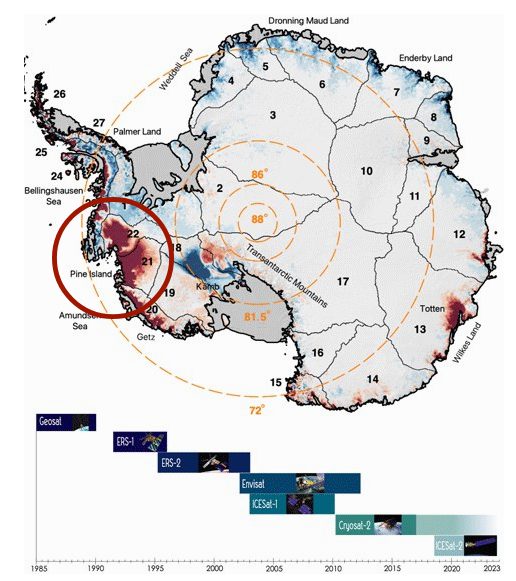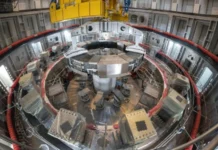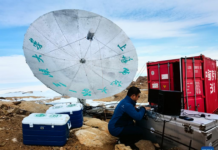The reason for the very rapid melting of some glaciers in the Antarctic may be an atypical hot core in the atmosphere, formed by the superposition of two warm air flows. This conclusion was reached by meteorologists at the National Antarctic Research Center (NARC) as part of the PolarRES project “Researching the Future of Polar Climate.”
The project has been going on for several years and is funded by the EU’s Horizon 2020 program. Ukrainian scientists are studying extreme warming and precipitation in the Antarctic.
Hot core in the atmosphere
“We study the physical mechanisms of extreme warming at different scales, as well as in the perspective of climate change. First of all, we focus on explaining the formation of “hot spots” – certain areas of the Antarctic coast, where glacier melting is much faster than in neighboring areas,” says Denys Pyshniak, Head of the Department of Atmospheric and Geocosmic Physics of the NARC, a project participant.
Although many factors influence the melting, namely the decrease in the height, of the ice sheet, the study showed that the contribution of atmospheric processes is very significant. In particular, it was found that during warming in the area of the Pine Island and Thwaites glaciers, an atypical hot core is formed in the atmosphere.
Our scientists obtained this result in early 2023 and suggested that this core is the main reason for the local melting of the glaciers in question. Therefore, further research was aimed at explaining the mechanism of formation of the hot core of the atmosphere and the ways of heat transfer to the glacier surface.

See the modeling results. Author: Denys Pyshniak, NARC.
Rain and ice melt
After that, the scientists discovered an unexpected feature. In areas of localized warming, a flow of warm, moist air from the north is superimposed on a warm, dry flow from the east. As a result, a thick layer of warm air is formed, firstly, and, secondly, precipitation in the form of snow is formed. This is due to the forced rise of moist air over the drier air, as well as over the continental slope.
This abundant snow has time to melt and turn into warm rain as it falls. This means that precipitation probably takes heat from the warm part of the surface atmosphere and transfers it to the surface of the glaciers. In addition, rain makes the snow cover darker and absorbs more light and infrared radiation, which also accelerates its melting. This is the assumption scientists have about the formation of a hot core and will continue to test it.
What will happen next
Another relevant question is how will the processes outlined above change if the atmosphere becomes a little warmer? Scientists continue to study the atmospheric phenomena over Antarctica and hope to get answers and confirm logical assumptions over the next year.









